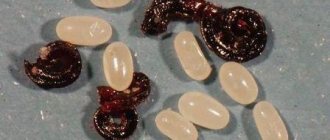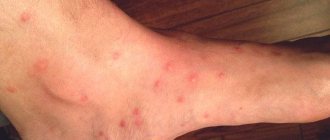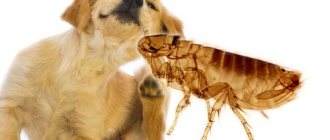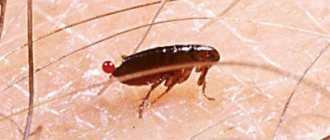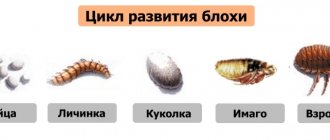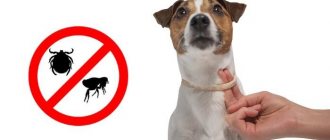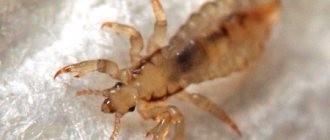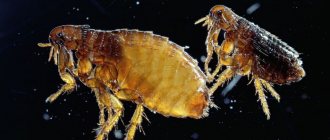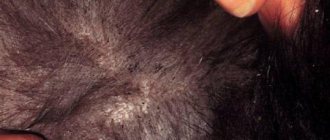Residents of apartment buildings complain: they are bitten not only by mosquitoes, but also by fleas! These small insects are worse than flying bloodsuckers - fumigators do not affect them, but fleas bite unnoticed, jumping onto their feet from the floor.
Where do they come from? How to get rid of them?
“These parasitic insects,” explained Oksana Dotsenko, a family doctor, “usually get into entrances and apartments on shoes or on the fur of pets. We hardly notice individual fleas because they get enough of animal blood. But, like every insect, these have cycles of mass reproduction. A “team” of twenty-two-millimeter insects can increase to 700 individuals in a month.
There are thousands of species of fleas in nature, but city dwellers are more often concerned about the family of common fleas, in particular, species such as cat, dog, mouse, rat fleas, and the like. They are similar in appearance, and when hungry, they can jump on animals, regardless of species, and on people. A painful wound forms at the site of the flea bite and does not heal for a long time. And the worst thing is that with the bite of these insects living in the dirt, an infection can enter the bloodstream, causing an inflammatory process and even illness (for example, typhus).
— Do fleas also live in rooms where there are no pets?
- Yes. In apartments, they settle in baseboards, upholstery of upholstered furniture, carpets, where they reproduce and lay eggs. Therefore, first, grab a vacuum cleaner (preferably one with a steam attachment) and try to clean the carpets (including wall ones), floors, baseboards, and the like as thoroughly as possible. Additionally, shake out carpets and bedspreads outside and keep them in the sun for several hours.
The next stage is wet cleaning. Pour a packet of baking soda into a bucket of water and thoroughly wash the floors. Next, you can treat the apartment with any anti-flea product. The packaging must be labeled “for insect control.” After treatment, close the room for 2 hours. Then ventilate thoroughly. It is important that residents of the entire house fight fleas at the same time. The staircases also need to be treated. At the request of the residents, the Housing Office can take care of this.
— Are there any good herbs that repel fleas?
— It has been noticed that they cannot tolerate tansy and wormwood. But at a distance their smell is not so intense, so the fleas do not retreat. And, unfortunately, this is a weak alternative to chemical insecticides.
What kind of fleas are there?
Scientists were able to identify, classify and describe more than 2 thousand species of fleas . But we are only interested in three of them:
- Dog fleas (Ctenocephalides canis).
- Felids (Ctenocephalides felis).
- Rat fleas (Xenopsylla cheopis).
It is worth briefly describing each of these types, how they differ from each other, and how dangerous they are to humans.
Dog fleas
Photo of fleas on a dog
Dog flea bites are painful and cause characteristic itching and redness. Can carry dangerous bacteria and infections. Fleas get into the house on the fur of pets after another walk. A dog can become infected either from other animals or after going to an infected place. Fleas, without a constant host (food source), live well in the ground, sand or in the nests of birds and rodents.
Dog fleas live and breed in fur, which makes sense. Externally, dog fleas are similar to cat fleas, but they still differ from each other.
Interesting fact! A flea colony consists of adult ectoparasites, larvae, eggs and pupae. At the same time, adult fleas make up only a small part of the colony - no more than 5-7% . This is important to know before you start fighting fleas.
Cat fleas
Fleas on a cat
Fleas on a cat look (if you can see them) not much different from those on a dog. And they behave similarly. They settle in cat fur after another walk or meeting an infected animal.
Cat fleas bite humans with pleasure. Even if there is a constant source of food nearby or several (cats, dogs), a flea can bite a person. At the same time, flea bites are rarely located above the knees - where they jump, they bite.
A cat flea bite is painful and dangerous. It can cause infection with brucellosis or rickettsiosis. If you do not fight fleas, the colony quickly grows to obscene sizes, affecting the life of the residents of the house.
Rat fleas
Rat fleas pose the greatest danger to humans. This is because rats themselves are carriers of dangerous diseases, for example: tularemia, brucellosis or plague.
You can read more about rats in this article.
At the same time, fleas do not live on rats, more often in their nests, constantly feeding on their blood . Rat fleas bite quickly and painfully. Flea bites are especially dangerous for children.
What do flea eggs and flea larvae look like - where are they located?
The larvae and eggs of different types of fleas (cat, dog, etc.) are different, but a person will not be able to distinguish them without a microscope and special knowledge. But this is not required, it is enough to know that flea eggs are small (less than a millimeter in length), white in color, oval in shape, they can only be noticed when there is a cluster of several pieces. It is not important to know what cat and dog flea eggs look like because they are not found in animal fur - female fleas leave the animal to lay them. If they cannot do this, then they squeeze the eggs from their body under considerable pressure, this allows them to cover a larger area and most of them roll off the victim's body. Most often, eggs can be found in dog or cat beds, in kennels, etc.
The larvae of cat and dog fleas are found in the places where the female left her eggs. They look like tiny worms. Since the larvae do not feed on the blood of humans or animals, they will remain where they were born until they become adults. It is impossible to distinguish the larvae of cat and dog fleas from other insects without the appropriate equipment.
What do flea eggs look like?
The eggs of fleas are no different from those laid by any other type of this parasite in our country. That is, they look like a small, up to a millimeter in length, light oval. People rarely see these pests at this stage, since females do not lay eggs on animals.
What do flea eggs look like in humans?
Female fleas do not deposit anything on the human body; usually this procedure occurs after feeding in shelters (in carpets, animal bedding areas, etc.). Even if a hungry female does not want to leave the victim’s body, the eggs scatter from her body under impressive pressure over a considerable distance, so a person extremely rarely becomes an “incubator” for the offspring of fleas. These products look like a small light oval, and are almost invisible.
Can humans have fleas?
Photo of a flea under a microscope
Nature is so generous that it has provided a separate type of flea for humans. It's called Pulex irritans . This species can live on a person for some time, but only in the case of a complete lack of hygiene of the latter. And human fleas are extremely rare. They reproduce in other places, only coming to Homo Sapiens to eat.
But dog, cat and rat fleas are very common. And they, without a twinge of conscience, bite a person, a small child, and even your parrot. These parasites are extremely gluttonous and indiscriminate in their taste preferences.
They bite painfully because they do not inject any substances during the bite, like mosquitoes or ticks, for example. And fleas don’t hide, but brazenly climb wherever they need to and dig their jaws into the skin. This is what a flea looks like at 20x magnification.
Therefore, the answer to the question: “ Can fleas live on humans ?” - no, they can’t, but they drink his blood with pleasure, leaving itchy and painful wounds and, possibly, a couple of pathogens of dangerous diseases.
Are fleas dangerous for humans?
The flea feeds on blood. To do this, she bites through the skin, injecting a substance into the wound that prevents the blood from quickly clotting. Along with saliva, pathogens that this parasite carries from other animals or people bitten earlier enter the wound. The wound is very itchy. A person scratches it, sometimes very hard, which causes the wound to increase in size and can become additionally infected. Cases of allergies to flea bites are quite common. In this case, the bite site becomes very red and swells. With multiple bites, a person’s body temperature may rise, general intoxication occurs, and fever occurs.
Fleas can cause the following diseases in humans:
- brucellosis;
- dermatitis;
- dipylidosis;
- pseudotuberculosis;
- erythema, etc.
Fleas can also transmit typhus, anthrax, and helminths to humans.
All this means that fleas in the house can and must be fought.
The first signs of fleas in the house
Fleas bit the child
Fleas can get into your house not only through our little brothers, you can bring them yourself. These parasites often live in dark and damp places. For example, a basement or barn.
The only condition for the survival of the colony is regular nutrition . And this is usually no problem, since mice, rats, and sometimes cats and dogs live well in the same places. Therefore, fleas can be brought into the house with some item, for example, with an old carpet from a long-forgotten basement.
How to understand that you have fleas in your apartment . There are several obvious and not so obvious signs:
- The main sign of fleas appearing in your home is bites, and not just single ones. When the flea gets to the victim, it can bite 10-30 times.
- Mostly fleas bite on the legs, but if your pets sleep in bed with you, and the colony of parasites has grown to impressive sizes, flea bites will be on the back, on the arms, and even on the face.
- The second obvious sign of the appearance of fleas in your home is that the cat or dog begins to scratch itself frequently and diligently.
- You may also occasionally see fleas. Of course, this is extremely difficult to do because of their size, but with a large number of parasites in the house, sometimes you can notice their movement.
Natural Home Remedies for Flea Bites
You need to treat red itchy bumps on yourself and your pets. Here are some of the best natural flea bite treatments for people and pets.
Apple vinegar
Raw, unprocessed apple cider vinegar can give you quick relief from itching caused by flea bites. The acetic acid content in it helps balance the pH levels on your skin to reduce itching and inflammation.
The Journal of Expert Opinion on Pharmacotherapy said that products that have a low pH level can help reduce itching: "The effect of acidic products such as apple cider vinegar may help protect the skin's barrier function and maintain a normal acidic pH level."
To take advantage of the acidic properties of apple cider vinegar, you must dilute equal parts of apple cider vinegar and water. Using a cotton ball, apply the diluted solution to the area where the bloat has bitten for quick relief from discomfort and irritation. Use apple cider vinegar any time you need relief from symptoms in yourself or your pet.
Apple cider vinegar has many other benefits for the skin. For example, you can use it as a face wash to keep your complexion healthy and acne-free. Or you can rinse your hair with apple cider vinegar to get rid of dandruff.
Lemon juice
Lemon juice can also be used as a natural treatment for flea bites for people and pets. The effect of lemon juice is similar to apple cider vinegar. It helps normalize high pH levels. Citric acid helps quickly treat flea bites and relieves the itching associated with them.
To use lemon juice, apply it directly to the itchy red spots.
Baking soda
You can use baking soda for its anti-inflammatory properties. It is a simple and inexpensive remedy for many skin complaints, including acne.
Dr. David Derrer on WebMD recommends using baking soda to reduce redness and itching from insect bites. It also has antimicrobial properties that can help prevent secondary infections if you scratch and damage the skin around a flea bite.
This home remedy is very effective in speeding up the healing process and soothing irritation caused by flea bites. Make a thick paste using baking soda and little water. Apply the paste to the inflamed, itchy spots and leave for 15 minutes before rinsing with warm water. Use 2-3 times a day until the itching goes away.
Baking soda is also safe enough to use as a natural remedy for dogs and cats. In fact, if your pet has a lot of flea bites, you can help your dog relieve the pain by adding baking soda to the bath. You should sprinkle baking soda into your dog's bath water and then wash and dry your pet as usual. This will help reduce itching on your pet's skin.
Oatmeal
Oatmeal is commonly used to relieve a number of skin complaints, and you can use oatmeal as a natural flea bite remedy. They contain anti-inflammatory and antibacterial agents that help reduce redness, soothe inflamed skin and prevent infections.
According to the Journal of Drugs and Dermatology, the moisturizing properties of oatmeal also help relieve itching and irritation. This balances the skin's pH levels, locking in moisture. The study concluded that oatmeal is an effective natural remedy for helping with a variety of itchy skin conditions and insect bites.
To make a natural home remedy for flea bites with oatmeal, you should grind a cup of oatmeal into a fine powder. Make a soothing paste by combining equal amounts of oatmeal and plain yogurt. You can also add some honey for antibacterial properties. Apply the oatmeal treatment to areas where fleas have bitten you or your pets and leave on for 20-30 minutes before rinsing with warm water. Repeat the process 2-3 times a day until the itching goes away.
Doctors at the Mayo Clinic recommend using an oatmeal bath to relieve itching over large areas of the body. This is an effective natural way to treat flea bites on pets. To make an oatmeal bath, prepare a warm bath and sprinkle one cup of ground oatmeal onto the water. Mix well. Use water and an oatmeal mixture to wash your dog's fur. The cleansing properties of oatmeal mean that you don't need to add any soap. Bathe your dog regularly in this bath to relieve discomfort.
Honey
Among the many medicinal properties of raw, natural honey is its ability to relieve itching and help repair damaged skin. You can apply raw honey directly to itchy flea bites for quick relief from the urge to scratch.
An interesting study on the soothing effects of honey on irritated skin found that it can help reduce the symptoms of itchy skin. Honey was applied to the scalps of people with chronic seborrheic dermatitis and dandruff (both of which are associated with itching). The result was a significant reduction in itching and this helped the skin heal faster. The study also mentioned that honey has antibacterial and antioxidant properties that can prevent the development of skin infections.
Aloe vera
Pure aloe vera gel can help flea bites heal faster. Aloe vera is a great all-rounder for hydrated, healthy skin. The reason why aloe vera gel is such a great remedy is because it contains anti-inflammatory and moisturizing ingredients that can soothe inflamed skin.
Aloe vera gel is more effective in treating skin conditions than many pharmaceutical products. For example, the Dermopharmacy Society published a study showing that aloe vera gel is more effective than 1% hydrocortisone cream. Hydrocortisone creams are commonly recommended by doctors to treat skin inflammation and reduce the symptoms of insect bites.
Apply pure aloe vera gel directly to itchy flea bites to relieve irritation and reduce swelling around the bite. Use natural aloe vera remedy 2-3 times a day until the discomfort goes away forever and you no longer have red spots.
Hemamelis
Hemamelis is another quick and natural home remedy for treating flea bites. It is naturally astringent and reduces itching and swelling because it helps pores shrink and shrink. Hemamelis is mild enough that it can be used as a natural treatment for flea bites for both people and pets.
Doctors at WebMD say this herb is often applied directly to the skin to reduce swelling, inflammation, and itching caused by insect bites. The anti-itching and anti-swelling effect is due to tannins. Its ointment is also antibacterial and can help treat and prevent secondary skin infections caused by bites.
Soothe your itchy skin by soaking a cotton ball in this remedy and dabbing the bites around your ankles, wrists, or other areas.
You can also use haemazel on dogs and cats to stop scratching as well as clear any infection that may be on the skin.
Iced tea bag
Tea also contains tannins, and the astringent properties of tea can help soothe irritation caused by flea bites. All you need to do is place a cold tea bag directly on the areas of your body that have been bitten by fleas.
The soothing effect of tannins in tea and a cold compress from a tea bag will help quickly get rid of unpleasant itching.
Ice pack
One of the easiest ways to get rid of annoying itching is to apply an ice compress. Ice helps soothe nerve endings that become irritated after a flea bite.
Dr. Charles P. Davis at eMedicinehealth.com recommends using cold packs or ice to reduce swelling and redness around a flea bite.
Place a few pieces of ice in a thin towel. Apply a cold compress to the itchy area for 2-3 minutes at a time. Do this for 10-15 minutes several times a day to treat itchy flea bites.
Never place ice directly on your skin, but always cover it with a cloth.
How can you become infected after a flea bite?
Let us immediately make a reservation that the transmission of pathogenic bacteria does not occur with every flea bite. According to statistics, approximately every hundredth to two hundredth bite can be infectious and potentially dangerous . Much depends on the conditions in which you live, in which city, country.
But one thing is known for sure - the more and more often fleas bite you, the higher the likelihood that some helminths will still settle in your body, whether you want it or not . Next, we’ll tell you where and what you can get infected with.
Plague
We have already partially mentioned this terrible disease, so we will not focus on it. Let us just add that the pain is not pleasant. The incubation period lasts from 5 to 8 days.
Interesting fact! In all three global plague epidemics (in the 6th, 14th and 19th centuries), the carriers of the Yersinia pestis plague bacilli were fleas that bit infected rats.
Fleas bit my leg (photo)
There are three types of plague:
- bubonic – it is the most common and best treatable;
- pneumonic plague - characterized by extensive damage to the lungs, pneumonia (extremely contagious and is a moderate form in severity);
- septicemic is the most difficult form for both the patient and doctors, since it is difficult to treat and often leads to death.
Let us remind you once again that in our time the plague is extremely rare, and, as a rule, in remote regions and countries. There is no need to be afraid of it, but it doesn’t hurt to be informed.
Hymenolepiasis
Hymenolepiasis is a worm that lives in the large intestine. In every second case, the disease is asymptomatic. Moreover, parasites can live in the body for quite a long time until they are identified (stool analysis) and destroyed by one of the modern antibiotics.
What symptoms may appear:
- heartburn;
- nausea;
- skin rash;
- diarrhea;
- dizziness;
- lack of appetite;
- severe periodic abdominal pain;
- Quincke's edema is possible.
It is treated relatively easily and without consequences.
Typhus
The causative agents of typhus are also transmitted from infected animals to humans through the bite of a flea. The disease is accompanied by symptoms such as:
- increased body temperature;
- feverish condition;
- hence the confusion, delirium;
- typhus can severely damage the central nervous system (CNS);
- affect the normal functioning of the cardiovascular system.
The disease is quite dangerous, but if you diagnose it in time and start timely treatment, then everything will be fine.
Tularemia
Tularemia is a dangerous zoonotic infection transmitted from animals to humans. The route of transmission is the same fleas , but not only them.
If the disease is allowed to develop, the kidneys, lungs and intestines are likely to be affected. The eyes may also be affected. Suppurations will begin to appear on the body. Severe inflammation of the lymph nodes is often observed .
The symptoms of the disease at the beginning of its development are very similar to a common acute respiratory infection: headache, fever, body aches, etc. Should you see a doctor? Undoubtedly! This could save your life.
Let us remind you! The advice to go to the hospital is not an empty call! Any infectious or bacterial disease requires medication, often inpatient treatment. Don't ignore modern medicine.
Helminths
Very unpleasant and very dangerous parasites. They happily settle in the large intestine, beginning to actively reproduce. The symptoms are similar to hymenolipedosis, we will not repeat it.
Helminths can harm the body by reducing immunity. If they are not detected in time, and if concomitant diseases that arise against the background of reduced immunity are treated independently, the story can end very badly.
These are not all diseases transmitted through flea bites. There are more of them, much more. But all of them are either extremely rare or located in subequatorial countries. For example, many subspecies of intestinal parasites live in Africa, India, and parts of Asia. We don't have those.
Do fleas bite people?
Let’s answer right away: yes, they bite, it’s not uncommon. By and large, fleas don’t care whose blood they drink – a dog’s, a cat’s, or yours. And when a person determines that the red spots on his body are flea bites, he first of all blames his pets, who “gave” him small biting bugs. This is partly true: usually people are bitten by fleas that live on warm-blooded animals: cats, dogs, and less commonly, rats or rabbits.
But there is also a separate type of “human flea”, which, like other types of fleas, is unpretentious and bites both animals and people. It is larger than its relatives, and is easier to recognize if you know that ordinary fleas are very small in size - literally 1 mm. Usually fleas try to drink as much blood as possible, for future use - in the end it does not even have time to be digested.
Often, oddly enough, hunters suffer from fleas, since fleas live on rabbits, foxes, birds and many other warm-blooded creatures that live in the forest. They easily jump onto their two-legged prey, doing it unnoticed, as always - and hunters notice severe itching and red spots a little later - scientists say that the reaction can appear after a few minutes. Therefore, many people confuse flea bites with mosquito bites, but we will talk about this below.
So, to the question “Can fleas bite people?” You can answer positively, but to say that a person has fleas would be wrong. Unlike lice, which live in hair and fur, most fleas bite the victim and immediately jump away, this is their natural behavior. For this purpose, they are given strong legs by nature, allowing them to jump distances 100-200 times the length of their body. Some types of fleas are truly attached to their owners and live for a long time on the surface of their bodies, but this does not apply to the most common fleas of pets, from which humans most often suffer.
Symptoms of flea bites and allergies to them: how to determine?
So, you can get bites in 2 ways:
- or fleas will jump on you from wild or domestic animals;
- or you accidentally bring flea eggs from somewhere with you (for example, from infested premises or with street dirt on your shoes).
The symptoms of flea bites can be called special - you definitely won’t miss them. Flea bites are quite painful and you will feel it when this nasty insect pierces your skin. But you are unlikely to have time to catch a flea - they jump very quickly.
We decided to find out the opinions of real people and asked one of our friends, who was once bitten by several fleas from her cat: “Do these bites itch?” To which we received the following answer: “Flea bites are very itchy at first, but this goes away quite quickly, faster than the itching from mosquito bites. Also, red spots with a hole in the center remain at the site of the bites. I didn’t do anything to them, and after a couple of days they were gone.” She also added that if you catch a flea and squeeze it between your nails, it “clicks” - an unusual way to identify this unpleasant insect!
We took the information into account, but upon further study of the issue, we found out that our friend with several bites on her leg was LUCKY! According to information from scientists, bites often form tracks of 3 pieces; they itch and hurt and can be located in the armpit or crook of the elbow, knee or ankle, as well as in folds of skin. By piercing the skin of the victim with its piercing-sucking mouthparts, the flea not only causes pain, but also releases its saliva containing hemolytic toxins into the wound. And it is impossible to predict how the human body will react to them. If everything is limited to standard rash and itching, simple local treatment will help.
But complications are also possible, since fleas are often carriers of many diseases, such as: plague, typhus (rat), pseudotuberculosis, listeriosis; tularemia; typhoid infections; rickettsial diseases. Of course, not every flea bite will give you a similar disease, like a tick bite, for example. But you should always be aware of the potential danger of infected insects.
Also, hemolytic toxins that enter the human blood can cause other diseases. Separately, it is worth noting an allergic reaction to flea bites. As you know, an allergen can be anything: from food to insect bites, including fleas. Very often you can find bites of these parasites on children who play a lot on the floor and with pets - unfortunately, many of them are susceptible to such allergies. And all because their immunity is not yet fully formed. But adults are no exception: any flea bite is a kind of lottery that can pass without a trace or end in an allergic reaction.
Common symptoms of a flea bite allergy include:
- rashes on the body in the area of the bites themselves;
- increased excitability of the nervous system: anxiety, general agitation;
- headache;
- temperature increase;
- diarrhea;
- difficulty breathing (this is a particularly dangerous sign; anaphylactic shock is possible).
In addition to allergies, flea bites are sometimes the causative agent of a skin reaction called pulicosis - it occurs as a result of the individual reaction of the human body to the same toxins that enter the bloodstream as a result of bites. And it is considered an aggravated allergic reaction of a particular person to fleas. This skin lesion is characterized by severe rashes and itching - and all this does not appear immediately, but several hours or days after the bites.
Among the main symptoms of pulicosis:
- swelling of the bite areas;
- the appearance of a red rash, blisters;
- the occurrence of mouth and throat ulcers,
- swollen lymph nodes;
If these symptoms are not paid attention to, then it is possible that the harmful effects of toxins will reach the central nervous system and they will begin to affect its functioning, which is fraught with dangerous consequences. Contact your doctor!
Pulicosis is most often localized in the lower legs (from the ankles to the knees); less often - hips, shoulders, forearms, lower torso, lower back. There are no rashes in the armpits, perineum and genitals.
“But the symptoms of pulicosis and allergies are still very similar!” - you say. And you'll be right. Therefore, it is better not to self-diagnose, but to consult a doctor if the symptoms cause concern.
In addition, you cannot always be sure that it was a flea that bit you. Often these symptoms are confused with bed bug or mosquito bites. We'll talk about them further.
Flea, bedbug and mosquito bites: how not to confuse them?
Do you know what a flea bite looks like? Most often, they cannot be immediately identified and are confused with bites of bed bugs and mosquitoes, because the symptoms are really very similar: red spots, itching, swelling. We decided to separate the information so that there would be no more doubts.
Please note that we are describing a standard reaction to insect bites, not an allergic one!
- Flea bites
Small deep bites, a hole in the center surrounded by a red areola, blisters. Usually they form tracks of 2-3 bites; most often fleas bite the feet and legs, less often the upper body. Bites can appear at any time of the day. The itching goes away relatively quickly, but is characterized by severe pain at the very moment of the bite. Insect activity peaks at the end of summer.
- Bed bug bites
The bite sites are red, swollen, hard spots of medium size, forming tracks of 3-5 bites throughout the body. Bedbugs are nocturnal insects; bites are usually noticed in the morning after sleep. Itching may or may not occur, but it does not last long. Bedbugs can be seen by brownish-brown spots on bedding, under the mattress, etc. from accidentally crushed insects. Bedbugs are active all year round.
- Mosquito bites
Bites are small red swollen spots, pinpoint bites, can be on any part of the body and appear at any time of the day. The itching is severe and goes away relatively quickly. Mosquitoes are revealed by their squeaks, and their bites are noticeable after the fact. The active season for insects is summer.
So we figured out the symptoms of various insect bites. If they indicate that it was fleas that bit you, then it is time to treat the damaged skin. Often the most popular methods help, which will not affect your wallet and will help you forget about flea bites like a bad dream.
How to get rid of fleas in an apartment
The question of how to get rid of fleas in an apartment usually arises when the situation is advanced. We strongly advise against acting on your own . And the point is not that a person cannot cope with fleas. There are modern aerosols and sprays against fleas. The point is different: professional pest control will kill all parasites, including those living under the baseboards, under the carpet, in mouse holes or in small cracks.
Therefore, if you have the opportunity to pay for the services of the sanitary and epidemiological service, do it ! We do not advertise any company, we simply recommend the most effective option.
Treating flea bites: the best recipes
First of all, you must understand that if you want to get rid of the unpleasant consequences of bites while fleas are swarming in the room, this makes no sense, since old bites will be followed by new ones. We’ll talk about getting rid of fleas in our other materials, but now let’s talk about treatment.
How to stop itching?
Indeed, when fleas bite, the most unpleasant thing is the itching that begins. doesn't seem to lead to anything good. It is difficult not to scratch the wounds, but under no circumstances should you do this, otherwise even greater swelling, infection and complications may develop.
First, you need to wash the bite areas with warm water and soap and disinfect - for this, use any antibacterial gel, alcohol lotion or even alcohol - in case “battle wounds” caught you in nature. You can apply ice to reduce swelling from a fresh bite.
Next, you can use any of the safe home remedies that can be used by both children and adults for local relief from itching and swelling:
- apple cider vinegar diluted with water;
- 1 tbsp. spoon of soda + 1 glass of water;
- 1 tbsp. a spoonful of honey + 2 glasses of lemon juice - for large bite areas;
- tea tree oil or any product with aloe vera juice, gel, oil;
You can also try using the “travelling” method, along with local disinfection with alcohol, by applying tea bags to the bite sites. Tannins contained in tea have bactericidal, astringent, anti-inflammatory and hemostatic properties. It definitely won't get any worse!
If natural methods don't help relieve your itching, try using commercial anti-itch remedies such as calamine lotion or hydrocortisone cream.
Hydrocortisone is a mild steroid cream, while calamine lotion contains iron oxide to treat mild itching.
If you can no longer tolerate the itching, and it does not subside, but, on the contrary, intensifies, consult a doctor; an allergic reaction may occur. The specialist will select the right antihistamine for you to stop itching and allergy symptoms. If you already know that you are allergic to insect bites, then use the same anti-allergy tablets as usual.
Please note: if you were bitten by someone and you felt a sharp deterioration in your health, expressed both in local skin damage and a change in your health for the worse, call a doctor immediately, do not waste time on self-medication!
Flea larvae
When faced with the problem of flea allergy dermatitis, many owners wash their dog with anti-parasitic shampoo. This measure allows you to get rid of only a small part of the flea population, and the presence of larvae and pupae in the environment allows the dog to become infected again and again. When the symptoms do not go away, the owners begin to look for ways to solve the problem; by searching for “flea larvae in a dog photo” in an Internet search, they find moving worm-like larvae of white or brownish-yellowish color, but do not find them on their dog. How to detect the main representatives of the flea population? Having hatched from eggs located in animal habitats (bedding, carpets, dust, sandy soil), the larvae molt, pupate and turn into adult parasites that again attack the dog. Thus, only adult fleas and their feces can be found on the animal.
How and where to detect fleas
Unlike bedbugs that live next to a person, fleas are active regardless of the time of day, so flea bites can appear on a person both at night and during the day.
The parasite's favorite habitat in the house is animal bedding, upholstered furniture, carpets, crevices behind baseboards, under trim and window sills, as well as secluded places where dust has accumulated. And if the room has not been renovated for a long time, then they can also be found behind peeled wallpaper.
Fleas lay their eggs in the same places where they hide: under the flooring, in the joints of the parquet, in the crevices of the floors. The adult feeds on human blood, but the insect larvae need the remains of human food to grow.
Keep food waste out of your home!
The surest and easiest method to identify these insects in the house is a sheet of white paper. Place it on the floor and wait a few minutes. If a red or black insect jumps onto a leaf, it will definitely be a flea.
Parasites can also be identified by the accumulation of black dots and their excrement in the secluded corners of the house.
Prevention from bites in Pokrov
Based on what we have read, we conclude that fleas do bite people. And every pet owner must follow the rules of prevention, namely:
- Regular examination of your pet;
- If necessary, carry out special processing;
- For every pet walk, use flea-repellent collars or other special means;
In order to protect yourself from flea bites, it is enough to wear covered clothing and use parasite repellents. Also, if there are fleas in the house, do not let the kids crawl on the floor.
Strong-smelling essential oils and plants (mint, wormwood) can also help repel parasites. Essential oils can be added to a bucket of water for cleaning floors, such as geranium. This will prevent parasites from entering the apartment.
Folk remedies for getting rid of fleas
If for some reason chemical destruction of fleas in your home is not suitable, you can use folk remedies.
Various plants cope well with expelling parasites. For example, fleas cannot stand the smell of blooming wormwood and fresh, strong-smelling pine sawdust. If your home is not heavily infested, simply place them around the perimeter of the premises and the fleas will quickly leave it.
Home remedies such as baking soda and salt, vinegar, and ammonia also work well against fleas.
Soda and salt are good because they kill not only adult parasites, but also their larvae. Spread the grains on the floor, wait a while and vacuum.
But a honey trap will not help you remove insects, but it will help you determine their nesting places. It’s easy to do: grease plastic plates with honey and place them around the apartment. After a while, fleas will begin to stick to them.
A mixture of water and vinegar in equal parts is ideal for treating wood surfaces.
It is recommended to rinse the floor with water, adding ammonia to it. The same mixture is used to wash animal bedding.
If the case is advanced - the parasites have multiplied in huge numbers and are constantly biting the inhabitants of the house, but you could not remove them yourself - you should contact the insect control service. Professionals will not only carry out disinfestation in the apartment using means inaccessible to the average person, but will also treat the entrances and basements of multi-story buildings.
Where do fleas come from?
These parasites appear in homes most often from animals. There was an opinion that the danger of fleas threatens only the first floors of residential apartments, but this is only a myth; pets live everywhere and can bring feline or other parasites with them. Between apartments, fleas can move from one door to another and even come to a house where a high floor and the absence of animals can guarantee safety from parasites.
How to protect yourself from insects
There is an opinion that fleas are found only in cluttered rooms where the floors are not washed for a long time. This is not true; parasites thrive in clean places. But still, they prefer to live where there are a lot of old things and where to hide.
Fleas live a long time, up to one and a half years, and manage to lay 2000 eggs. Reproduction occurs in geometric progression, and if a couple of these insects get into the house, very soon a crowd of hungry parasites will appear there.
To get rid of fleas, perform general cleaning. Vacuum all surfaces, wash floors with water with the addition of ammonia, carefully treating areas in corners and near baseboards.
But parasites cannot be removed with just washing the floors; on the contrary, they like a warm and humid environment. To exterminate insects, it is necessary to use insecticides in the form of aerosols and powders. Pets are treated with special products, their bedding is cleaned or changed. The room is sprayed with aerosol preparations or powders are scattered.
The basements of multi-story buildings often become breeding grounds for fleas, from where they penetrate into apartments. To get rid of parasites, you will need the help of a sanitary and epidemiological station.
What do bite marks look like?
Flea bites have the following characteristics:
- The parasites bite the legs of a sitting and standing person, and the neck and arms of a sleeping person;
- after a bite, a swelling forms on the skin with a point where the skin is damaged;
- Next to the mark there are usually one or two more, since the flea sequentially bites the skin in 2-3 places located at a short distance from each other.
The itching and pain from flea bites is superior to mosquito bites. They don't take long to heal. But not all people are equally sensitive to damage caused by fleas. Some people wonder why insects bite them and others don’t. This impression is deceptive, since fleas do not select victims according to any criteria. They bite everyone, but not every person feels pain from the bites.
Why do fleas bite?
Fortunately, humans are not suitable “housing” for fleas, because fleas need thick hair to keep them safe. It is for this reason that parasites settle on dogs, cats, and in rare cases, birds. But despite this, fleas bite both animals and people. After the parasite tastes human blood, it returns back to the pet.
The question, “Do dog or cat fleas bite humans?” directly depends on the number of parasites. In the case of a small amount, an animal is enough for them. But if fleas are not noticed in time, or ignored altogether, then their number grows, and accordingly, sooner or later, one pet will not be enough for them. That is, a person for them is just a new source of food.
Where do fleas come from?
Ideal living conditions for fleas are basements, dirty entrances, garages, sheds and other unsanitary places. It is enough for a person to move things from a barn or garage to an apartment or visit the basement, and fleas will move with him on shoes or clothes into his home. Or, for example, if during renovation, furniture is kept in a closet or shed, then fleas can take a liking to the pieces of furniture and, after the renovation is completed, move into the house with them. You can also transfer parasites to your home from another house where these insects already live.
Ground fleas and sand fleas living in the soil are also dangerous. The first, with the onset of warmth, wake up hungry and can enter a human home on the body of an animal. And the latter are common in warm countries, and can get into the house on a person’s shoes along with sand dust.
How a flea bites through skin
The insect has long jaws that, when folded, resemble a needle. The flea pierces the skin with them, reaches the capillaries and drinks blood. The blood vessels are located deep, and to reach them, the insect inserts its head and part of the body into the tissues of the body. When the parasite sucks blood, it assumes an upright position.
Like other blood-sucking insects, when bitten, along with saliva, a flea injects a composition into the victim’s tissues that prevents the blood from clotting. This makes the process of sucking it out easier. Unlike mosquitoes, it does not inject an anesthetic into the frame, and when a flea bites a person experiences a sensation reminiscent of a needle prick. But thanks to its strong chitinous shell, the insect is not afraid of blows and scratching of the bitten victim.
